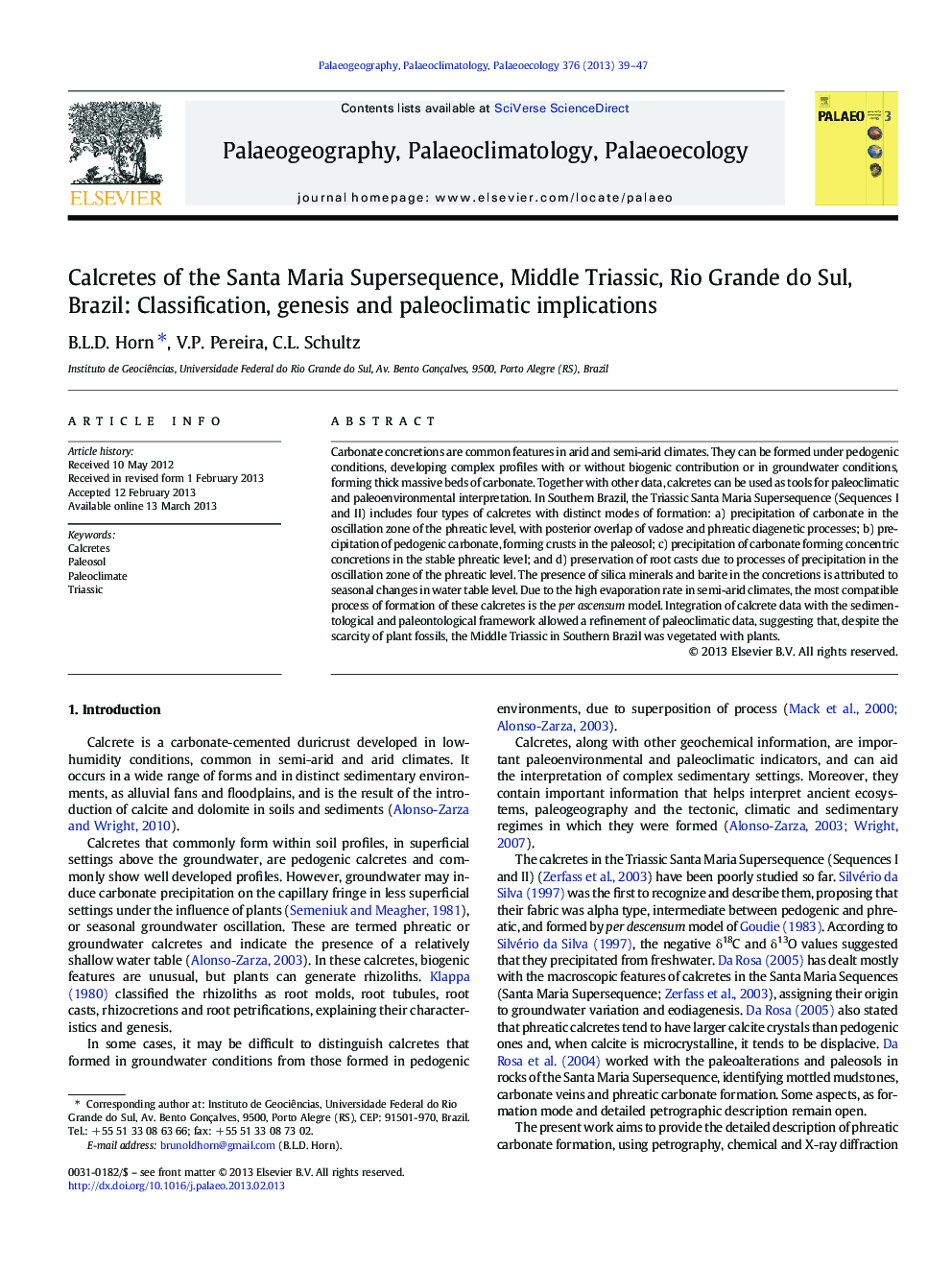| کد مقاله | کد نشریه | سال انتشار | مقاله انگلیسی | نسخه تمام متن |
|---|---|---|---|---|
| 4466601 | 1622210 | 2013 | 9 صفحه PDF | دانلود رایگان |

• We discuss the genesis of calcretes based on calcretes of south Brazil.
• Calcrete climate significance is discussed for the south aridity belt of Gondwana.
• Presence of rootcasts indicates the presence of plants despite absence of fossils.
Carbonate concretions are common features in arid and semi-arid climates. They can be formed under pedogenic conditions, developing complex profiles with or without biogenic contribution or in groundwater conditions, forming thick massive beds of carbonate. Together with other data, calcretes can be used as tools for paleoclimatic and paleoenvironmental interpretation. In Southern Brazil, the Triassic Santa Maria Supersequence (Sequences I and II) includes four types of calcretes with distinct modes of formation: a) precipitation of carbonate in the oscillation zone of the phreatic level, with posterior overlap of vadose and phreatic diagenetic processes; b) precipitation of pedogenic carbonate, forming crusts in the paleosol; c) precipitation of carbonate forming concentric concretions in the stable phreatic level; and d) preservation of root casts due to processes of precipitation in the oscillation zone of the phreatic level. The presence of silica minerals and barite in the concretions is attributed to seasonal changes in water table level. Due to the high evaporation rate in semi-arid climates, the most compatible process of formation of these calcretes is the per ascensum model. Integration of calcrete data with the sedimentological and paleontological framework allowed a refinement of paleoclimatic data, suggesting that, despite the scarcity of plant fossils, the Middle Triassic in Southern Brazil was vegetated with plants.
Journal: Palaeogeography, Palaeoclimatology, Palaeoecology - Volume 376, 15 April 2013, Pages 39–47